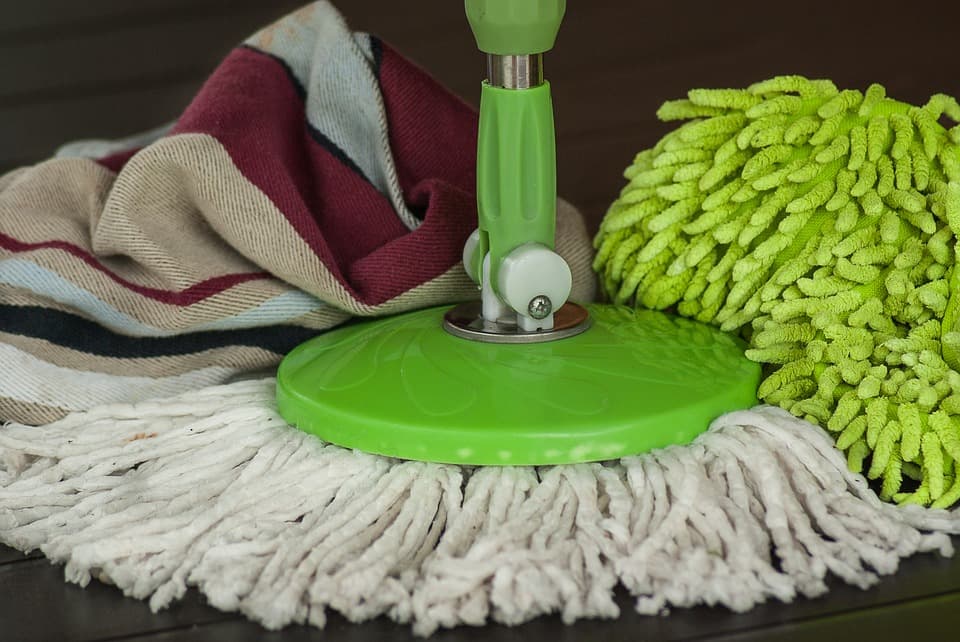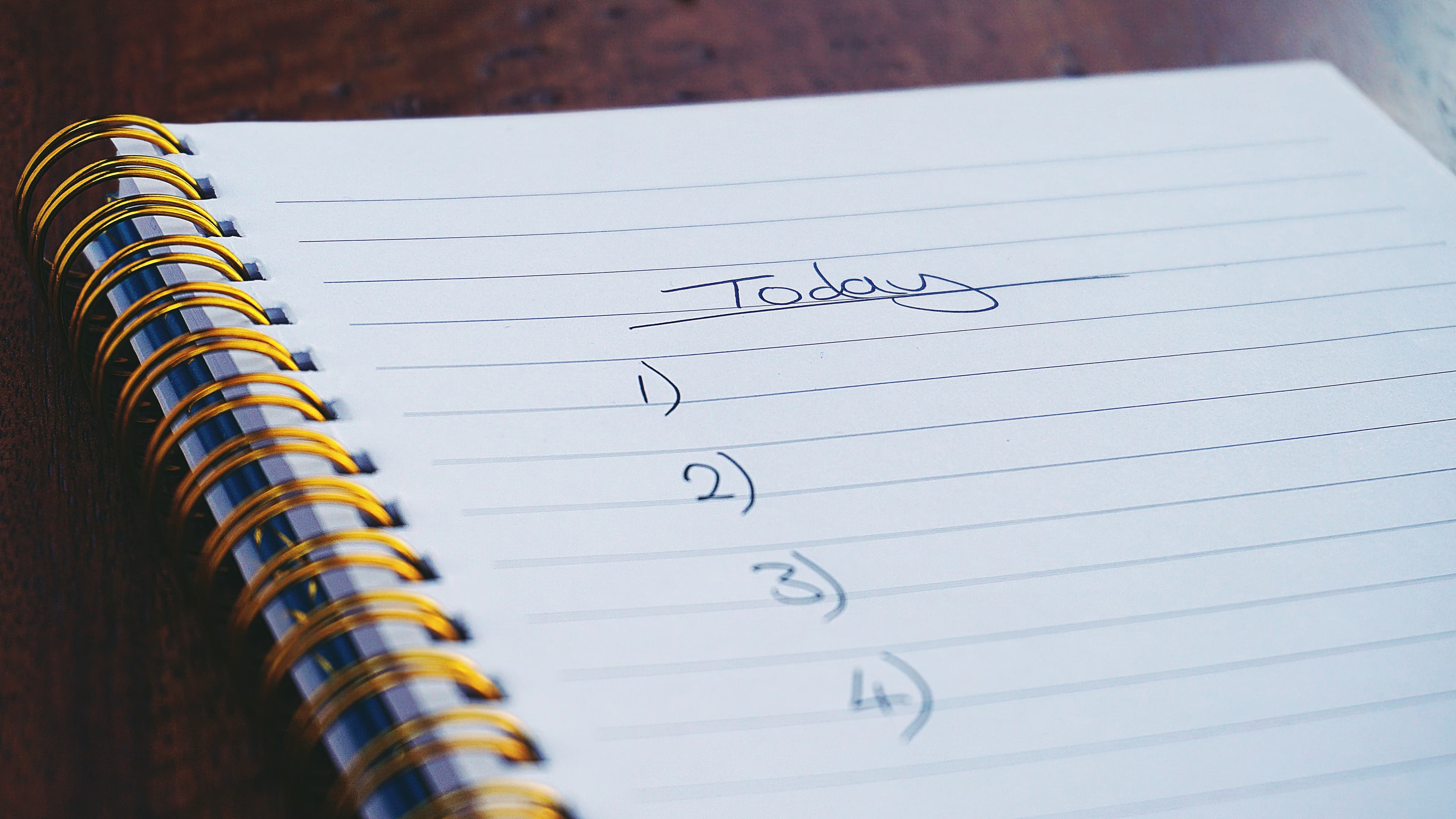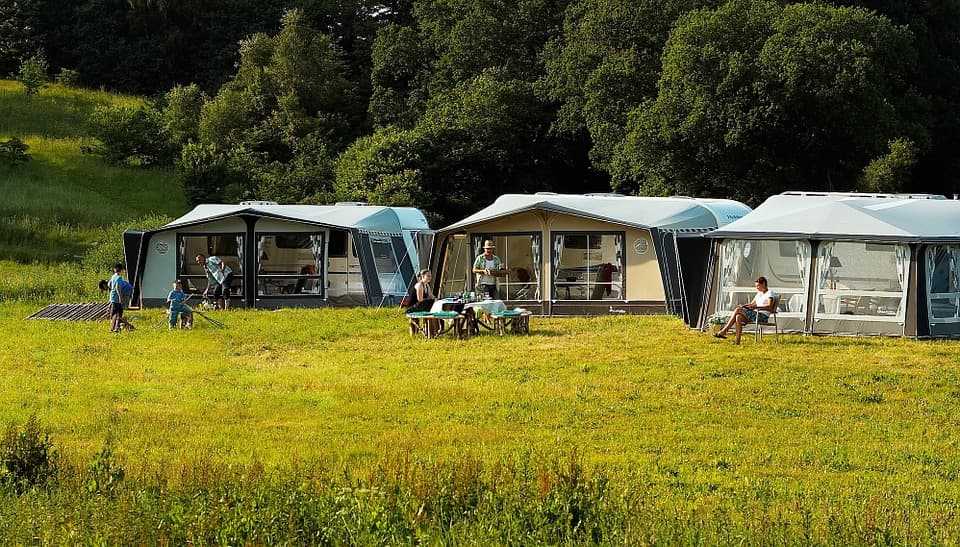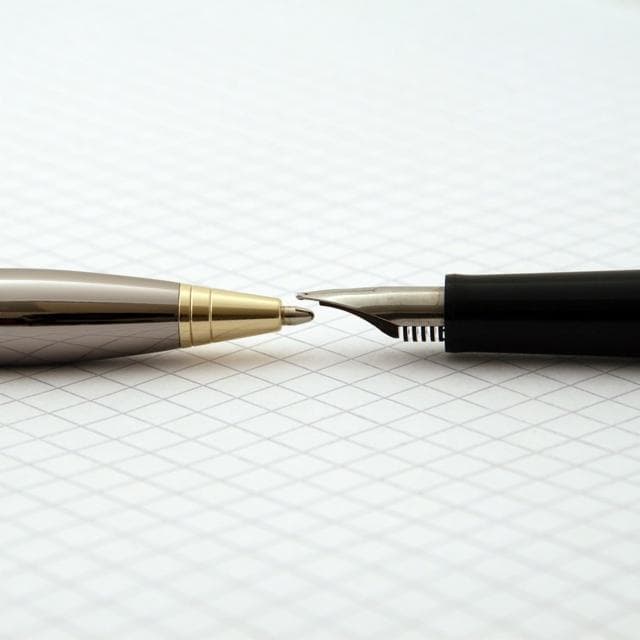Baby Checklist

- Baby monitors include cameras and can monitor vitals, provide two-way communication and alert parents when something goes awry. The best monitors can be used via smartphone and allow for remote access and control as well as multiple cameras. Consider use and distance from your baby before purchase.
- A crib is one of your biggest first investments for your baby. Be sure and do your research before buying. Ensure you buy one that is sturdy, the slats are the right distance apart and it’s easy to access baby (many have pull down sides). Some convert into toddler beds.
- Your baby’s crib mattress should be easy to clean, hypoallergenic, soft and fit into the crib without any gaps. Most cribs come with a mattress, but if yours doesn’t, be sure it fits well.
- A changing table is where you will keep all your essentials for a diaper change. Look for one that is sturdy, easy to wipe off, with plenty of space for baby and additional storage for items like diapers, rash cream, baby oil and more.
- Many people choose a bassinet as a first bed for their baby, instead of a crib. A bassinet has the advantage of being portable, allowing you to place it beside your bed and take it with you. Look for bassinets that provide easy access to baby, are light, durable and easily portable.
- A rocking chair in the nursery is a great place to nurse or bottle-feed your baby, as well as sing or read to them before nap or bedtime. Look for a chair that is comfortable, with padded arms to support you while holding baby, and plenty of lap room for baby.
- A mobile in your baby’s crib is a must-have to distract and entertain them before naps or bedtime. Look for ones that include sound, motion, multiple settings and can interact with your baby, stimulating their senses and building hand-eye-coordination.
- A nightstand in the nursery can hold a lamp, some baby books and other memorabilia or gifts for baby from family. Look for a nightstand with a height that is easy to reach from your rocking chair, or wherever you will nurse, for ease of reach during those night feedings.
- Blankets, like sheets, will go through a lot of runs in the washing machine due to diaper accidents. Look for cotton blankets that are big enough to tuck around baby during sleep and while being held outside the crib.
- Crib sheets protect the mattress pad and mattress. Because your baby is bound to have plenty of accidents, it will be helpful to have several on-hand. Look for quality sheets that are soft to the touch and can withstand lots of washes.
- Baby quilts can be used in the car seat, crib, and while nursing. It’s worth investing in one that is cozy, made of soft material, warm, washable, and can stand plenty of wear.
- Mattress pads are a must with a baby. The first leaky diaper will make you happy you invested in two. Look for ones that are made of hypoallergenic material, durable and washable.
- Car seats often convert to baby carriers, saving you money from having to invest in both. Look for a car seat from a reputable firm that is safety rated, washable, light, and durable. Most of the top brands will also convert to baby carriers.
- Baby carriers and car seats are often one and the same. You can save money by buying a car seat that converts easily to a baby carrier. Look for one from a reputable firm that is durable, light, washable, and grows with your baby.
- A baby stroller is a must in order to maintain some independence while you have a young baby. Strollers come in all shapes, sizes, and designs. Some are built for trail type use, while others are for urban use. Think about how you will use it most before you buy.
- Baby slings or carriers allow you to keep your baby close while also freeing your hands to do other things. They can range from simple pieces of stretchable fabric to more molded slings. The best thing you can do before you buy is test it out on you and your baby for comfort and fit. Always look for an ergonomic baby carrier.
- Baby play yards give you a safe place to set baby down for back or tummy time without worrying about the family pet or other hazards. The best play yards are light, portable, expandable, and easy to set up.
- Babies love to bounce! Look for bouncers that are stable, offer ample head and neck support, while providing a comforting bouncing and/or rocking type movement. Many bouncers come with attached activities that your baby can interact with while bouncing.
- Baby swings are great for keeping your baby secure and comforted while you do other things. The best swings are adjustable, have varying speeds, and come with soothing sounds that lull your baby to sleep.
- Activity centers can be used for play and learning simultaneously, while freeing you up to do other things. Activity centers feature different developmental learning activities which are designed to teach your baby things like cause-and-effect, as well as improve hand-eye-coordination. Look for activity centers that engage the body and stimulate multiple senses.
- Development toys for baby include crib mobiles, play mats, lights, blocks, and other toys designed to stimulate your baby’s mind and senses during critical growth years. Check the packaging to be sure you’re getting age-appropriate toys.
- Baby bottles are used if you’re feeding your baby formula or breast milk via a bottle. They come in many different shapes, sizes and plastic or glass. Look for ones that are light, clean easily and have an ergonomic design.
- Baby bottle brushes are designed to reach inside and get out any residue within the bottle. Look for one that has an ergonomic handle and reaches easily to the bottom of the bottle. It’s a good idea to keep two on-hand so one is available, while the other is being cleaned.
- Bottle sterilizers are used to clean, dry, and disinfect baby bottles after use. The best sterilizers clean multiple bottles at once quickly and have options to just sterilize or sterilize and dry. Look for ones with accessory holders that will also clean breast pump parts and bottle nipples.
- Burp cloths are usually put over the shoulder to catch spit up when you hold your baby on his tummy, with his head by your shoulder, to pat him until he burps after feeding. You will want to have plenty of burp cloths on-hand in the nursery, kitchen, and in your diaper bag.
- Bibs will protect your baby’s clothes while nursing or feeding and also from drooling. This will become even more important when your baby first begins teething! Look for ones with snaps or velcro that are durable and washable.
- Nipples and caps are used while your baby nurses (from a bottle) and for storage. Be sure that they fit on your nursing and milk storage bottles. Nipples come in different materials and designs. You might have to experiment with a few before settling on which one your baby prefers.
- There are a wide range of baby formulas to choose from. Consult with your doctor about which formula is best for your baby.
- Nursing your baby will make your nipples sore and cracked quickly. Invest in nipple cream and keep it in the nursery for after you nurse and in the bathroom to put on post-shower. You’ll need to apply it frequently if you’re nursing full-time.
- Breast pumps provide convenience by allowing you to give your baby breast milk even when you are unavailable to nurse.The best pumps are quiet, adjust to your body, allow for double pumping (from both breasts simultaneously), have powerful suction, and a timer. If you pump regularly choose an automatic one. If you are only going to pump incidentally you can go for a manual pump.
- Nobody tells you that when you are nursing, sometimes your breasts leak! Even the sound of another baby crying, who is not your own, can stimulate milk production and create leakage.Save yourself from embarrassing leaks by keeping breast pads handy.
- Milk storage containers are designed to hold breast milk or formula. They come in different sizes, shapes and in glass or plastic. If you buy plastic, look for ones that are BPA free. Have plenty on-hand and keep them in your nursery, refrigerator, and diaper bag for easy use.
- Nursing pillows are designed to support your baby comfortably while you nurse, giving your arms a break and making it a more relaxing experience for both of you. Look for ones that are sturdy, washable, and made of soft materials.
- Nursing bras make it much easier to nurse in public, providing your baby easy access and privacy for you. Look for bras that are soft and flexible because when your breasts are full of milk they will swell and sometimes become sore. Nursing tops make great accompaniments to a nursing bra.
- Whether you choose to go with cloth or disposable diapers, buy in bulk and figure you’ll use at least 10 a day. Pay attention to the weight of your baby, as this is how diapers are sold. Too big of a diaper means gaps between the legs leading to leakage, and too small of a diaper means it will pinch your baby’s delicate skin.
- You can never have enough baby wipes on-hand! Buy them in bulk to save on cost and keep some in your diaper bag, by the changing table and in the nursery. You’ll use them to do everything from wiping your baby’s mouth after feeding to cleaning their bottom after a messy diaper.
- Rash cream is a must-have and should be on-hand at all times. When diaper rash does appear, you’ll need to treat it right away or it can rapidly worsen. The best creams heal the skin quickly and are designed to last till the next diaper change.
- Baby powder helps keep your baby’s bottom dry and prevents chafing which can cause diaper rash. Look for powder free from allergens, dyes, or perfumes that can irritate your baby’s sensitive skin.
- A diaper bag is essential for use when you are out and about. You’ll want to look for one with plenty of space for diapers, creams, powders, a bottle and a change of clothes. Durable and light materials are good because you’ll usually be toting it and your baby simultaneously.
- Diaper pails provide a place to gather messy diapers before disposing of them. Look for a lid that closes securely to prevent odors from escaping. The best have a foot pedal that allows you to raise the lid with your foot while quickly depositing the messy diaper.
- Baby bath tubs are designed to support your baby safely. Look for tubs that incline, provide head support and have a lining designed to prevent baby from slipping while bathing.
- Baby shampoo should be free of perfumes, dyes, or other harsh ingredients that can irritate your baby’s scalp and skin. Look for shampoo designed just for baby (some will be marked “no tears”).
- Baby soap is designed to be gentle on baby’s delicate skin and is free of perfumes, dyes, and other irritants. Look for soap designed just for baby.
- Baby oil helps to lock in moisture. Look for oil designed just for babies. Apply it right after bath-time to trap moisture on your baby’s skin.
- Your baby’s skin will be very sensitive and need lots of lotion. Look for lotions designed for babies, which are generally free of perfumes and other irritants that could hurt baby’s delicate skin.
- Bath time will quickly become one of your baby’s favorite times and adding a few toys help keep baby distracted while bathing. Look for soft toys that are safe to put in baby’s mouth and make noises when squeezed.
- Hooded towels keep your baby warm by trapping body heat which escapes from the head, while drying off the rest of her body with the attached towel.They are also handy for covering and keeping your baby warm while transporting from bath to dressing room.
- Baby washcloths are handy, not just for washing your baby’s face and body, but also to put in the bathtub for traction and to clean baby up after spit-up or feedings.
- Receiving blankets are used to cocoon your baby and provide both warmth and security. They are wrapped around your baby “burrito” style in order to stay secure and give comfort. It’s a good idea to have plenty of these on-hand as you will go through several a day.
- When your baby gets a cold, it is very difficult to clear their sinuses. Thus, a nasal aspirator allows you to literally suck the mucus out of your baby’s nose, clearing their sinus passages and allowing them to breathe through their nose.
- Baby thermometers come in many different styles,including; oral, anal, in-the-ear, and temporal. The temporal are designed to be swiped across the forehead and are the easiest to use. It’s a good idea to have extra batteries on-hand for temporal or in-the-ear thermometers.
- You should have fever reducer in both the medicine cabinet and first-aid kit. Because babies don’t have a developed immune system it is very important to have this on-hand to use at the first sign of a fever.
- You cannot use adult size nail clippers on baby’s soft delicate nails. They are too small and tear too easily. It’s well worth investing in a good pair as you will use these at least once a week to keep your baby’s nails trimmed to prevent inadvertent scratches.
- Bodysuits keep your baby warm and comfortable because they cover his waist, snapping below the diaper. They come in short and long-sleeves, so can be worn as an outer or inner-layer. They can be used for playing or to sleep in.
- Booties can be used over socks or, in some cases, alone. They will keep your baby’s feet warm and protect them from the elements. Choose booties that are easy to put on and washable.
- Nightgowns should be long enough to keep your baby warm and made from soft fabrics with buttons or snaps that make it easy to get over baby’s neck.
- Pajamas should be warm, comfortable and very easy to get on and off. Pay particular attention to this, as diaper accidents will be often and there’s nothing worse than trying to get a tired baby out of a messy pajama set!
- Pants, shirts, and dresses should be made out of comfortable fabric and easy to put-on. Look for pants with snaps down the inseam, and shirts or dresses with snaps or buttons at the neck.
- Hats don’t just keep your baby warm by conserving body heat, they can also help protect their delicate skin from harsh sunlight. Choose a warm hat with earflaps for winter and a hat with a wide-brim for summer.
- Buy sweaters in different materials to suit the season to ensure your baby is comfortable no matter the conditions. It can be tough to put a sweater on your baby, though, so look for ones with buttons, snaps, or collars wide enough to make getting them on and off easily.
- Socks help make your baby comfortable by keeping their feet warm and dry. You’ll want to buy plenty of pairs as they can disappear easily, due to their small size.
- Baby mittens serve two purposes. They keep your baby’s hands warm and protect them from the harsh elements. Choose your fabric and design based on the season and occasion. Always buy at least two pairs as they can be hard to keep track of!
- Even before your baby learns to crawl, safety gates can provide protection from the family pet, other small children, stairs, and other hazards. Safety gates can be temporary or permanent, and made out of wood, plastic, or other material. Pick one that is durable and meets your needs.
- It is impossible to fit baby clothes on adult clothes hangers. Even if you fold them and lay them across the larger hangers, the outfits always end up in a pile on the floor. Investing in some small hangers will make it much easier to keep those adorable baby outfits accessible and organized.
- A well-stocked first aid kit is critical when your baby has an accident or gets sick. Be sure everyone who will care for your baby knows where it’s at and how to use it. Check online for a comprehensive first-aid kit designed especially for babies.
Baby Checklist Frequently Asked Questions
Newborn essentials are items that parents need to care for their newborn in the first few weeks of life. Key items include:
- Diapers: Stock up on both newborn and size 1 diapers.
- Clothing: Soft onesies, sleep sacks, and hats.
- Feeding Supplies: Bottles, formula (if not breastfeeding), and breast pump.
- Sleeping Arrangements: A crib or bassinet with a firm mattress and fitted sheets.
- Bathing Supplies: Baby soap, washcloths, and a baby tub.
- Health & Safety Items: Thermometer, nail clippers, and baby first-aid kit.
These essentials help ensure your baby's comfort and safety during their early days.
After having a baby, several important paperwork tasks must be completed:
- Birth Certificate: Ensure you fill out the necessary forms at the hospital or local office to obtain your baby's birth certificate.
- Social Security Number: Apply for your baby's Social Security number, often done at the same time as the birth certificate application.
- Health Insurance: Add your newborn to your health insurance plan within the specified time frame.
- Pediatrician Appointment: Schedule your baby's first check-up with a pediatrician.
- Parental Leave Forms: If applicable, submit parental leave paperwork to your employer.
Completing these steps ensures your newborn's legal identity and access to healthcare.
The Happiest Baby Checklist is a guideline created by pediatrician Dr. Harvey Karp to help parents soothe their newborns and promote better sleep. Key components include 5S:
- Swaddling: Wrap your baby snugly in a lightweight blanket to mimic the womb experience.
- Side or Stomach Positioning: While holding (never in the crib), place your baby on their side or stomach to calm them (always back to sleep).
- Shushing Sounds: Use white noise or shushing sounds to replicate the sounds of the womb.
- Swinging Motion: Gentle rocking can soothe fussy babies.
- Sucking: Offer a pacifier or allow breastfeeding for comfort.
This checklist aims to create a calming environment for both babies and parents.
When bringing home a newborn, there are several immediate needs you should prioritize:
- Diapers & Wipes: Newborns will need frequent diaper changes, so have both diapers and wipes ready.
- Clothing: Prepare soft onesies and hats suitable for the current weather.
- Feeding Supplies: If breastfeeding, consider nursing pads; if formula feeding, have bottles ready.
- Sleeping Space: Set up a safe sleeping area like a crib or bassinet with appropriate bedding.
- Bathing Essentials: Have gentle baby soap and washcloths prepared for bath time.
Focusing on these essentials will help ensure your newborn's comfort right from day one.
Caring for a newborn involves several essential practices that ensure their health and well-being:
- Feeding: Newborns typically eat every 2-3 hours. Whether breastfeeding or formula feeding, ensure they receive adequate nutrition.
- Diaper Changes: Check diapers regularly and change them promptly to prevent rashes.
- Bathing: Sponge bathe until the umbilical cord falls off; then transition to gentle bathing in a tub.
- Sleep Safety: Always place your baby on their back in a crib free of toys or loose bedding for safe sleep.
- Regular Check-ups: Schedule pediatric appointments for immunizations and developmental assessments.
Understanding these essentials of newborn care will help parents provide a nurturing environment.
It's best to start buying newborn essentials during pregnancy, ideally around the second trimester (weeks 13-26). This allows ample time to gather everything needed before the baby's arrival. Consider these tips:
- Create a Checklist: List all necessary items like diapers, clothing, feeding supplies, and safety gear.
- Shop Early Sales: Look out for sales during holidays or special events when baby items may be discounted.
- Avoid Last-Minute Shopping: Purchasing early reduces stress as your due date approaches.
- Consider Your Space: Make sure you have enough room at home for all essentials before shopping.
Starting early ensures you're well-prepared for your new arrival.
Essential equipment for caring for a newborn includes:
- Crib/Bassinet: A safe sleeping space with a firm mattress is crucial for safe sleep practices.
- Car Seat: A reliable infant car seat is mandatory for transporting your baby safely in vehicles.
- Stroller: Choose a stroller that fits your lifestyle; consider options that offer easy maneuverability and storage.
- Baby Monitor: A monitor helps keep an eye on your sleeping baby from another room.
- Breast Pump/Feeding Supplies: If breastfeeding, consider investing in a breast pump; otherwise, have bottles ready if formula feeding is preferred.
- Changing Table or Pad: For easy diaper changes with organized storage nearby.
Investing in quality equipment ensures comfort and safety during those early months.
Right after birth, babies typically wear:
- Hospital Provided Clothes: Hospitals often provide basic clothing like caps and swaddling blankets until discharge.
- Onesies/Sleepers: Soft cotton onesies or sleepers are ideal as they are easy to put on/off and provide warmth without restricting movement.
- Socks/Mittens: Keep tiny feet warm with socks; mittens can prevent scratching from sharp nails but avoid overheating by ensuring layers are breathable.
Ensure that any clothing is free from irritating tags or seams to keep your newborn comfortable during their early days.
Table of Contents
Related Checklist

Cleaning
Michelle.Tako

Daily To Do List
Checklister
Related Checklist Templates
More Checklist Templates
"Baby Checklist" not suitable?
Search the World's largest free library of checklist templates





